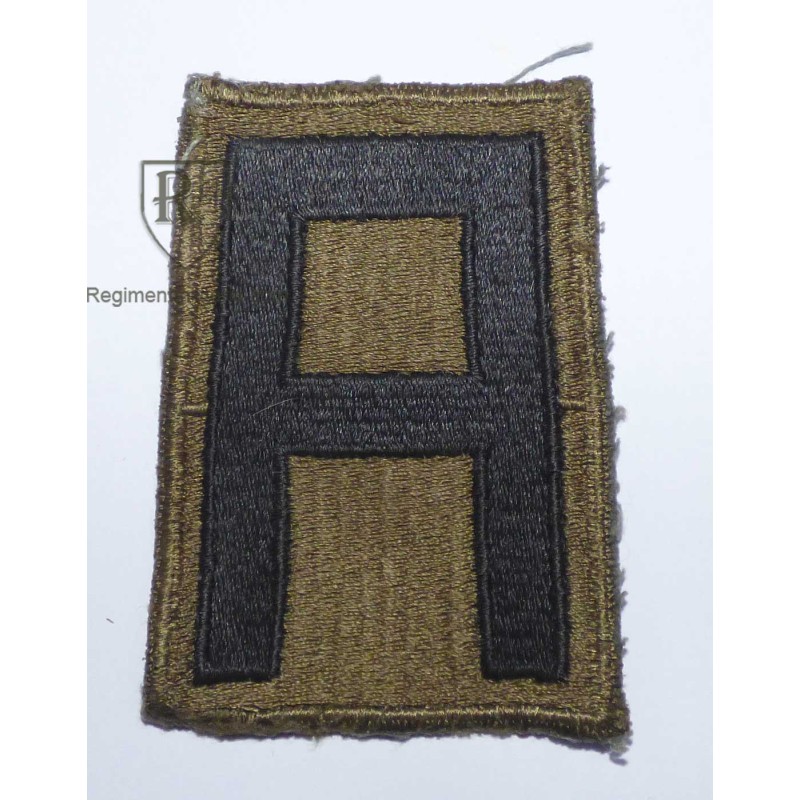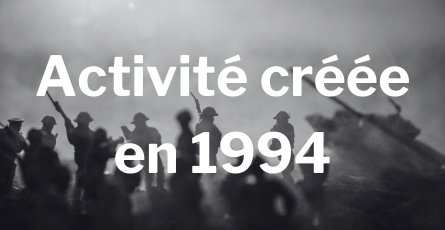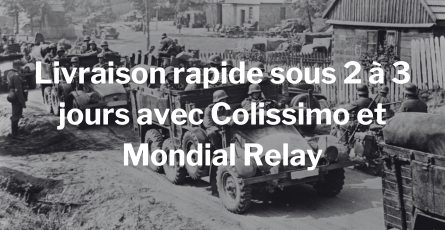

Banner

Banner




1st ARMY Patch.
 Garanties sécurité
Garanties sécurité
(à modifier dans le module "Réassurance")
 Politique de livraison
Politique de livraison
(à modifier dans le module "Réassurance")
 Politique retours
Politique retours
(à modifier dans le module "Réassurance")
1st ARMY green Patch, original, WW2, cut edge.
First Army's entry into World War II began in October 1943 as Bradley returned to Washington, D.C. to receive his command and began to assemble a staff and headquarters to prepare for Operation Overlord, the codename assigned to the establishment of a large-scale lodgement on the European Continent following Operation Neptune, which was the invasion of Normandy. The headquarters were activated in January 1944 at Bristol, England.
Upon going ashore on 6 June 1944, D-Day, First Army came under General Bernard Montgomery's 21st Army Group (alongside the British Second Army) which commanded all American ground forces during the invasion. Three American divisions were landed by sea at the western end of the beaches, and two more were landed by air. On Utah Beach, the assault troops of VII Corps made good progress, but V Corps on Omaha Beach came nearest of all of the five landing areas to disaster. The two American airborne divisions that landed, the 82nd and 101st, were scattered all over the landscape, and caused considerable confusion among the German soldiers, as well as largely securing their objectives, albeit with units completely mixed up with each other. First Army captured much of the early gains of the Allied forces in Normandy. Once the beachheads were linked together, its troops struck west and isolated the Cotentin Peninsula, and then captured Cherbourg. When the American Mulberry harbour was wrecked by a storm, Cherbourg became even more vital.
After the capture of Cherbourg, First Army struck south. In Operation Cobra, its forces finally managed to break through the German lines. The newly established Third Army was then fed through the gap and raced across France.
With the arrival of more US troops in France, the Army then passed from the control of 21st Army Group to the newly arrived 12th Army Group which commanded the First Army and the newly formed Third Army under Lieutenant General George S. Patton. General Bradley assumed command of the 12th Army Group and Lieutenant General Courtney Hodges was placed in command of the First Army. First Army followed Third Army, the American armies forming the southern part of the encirclement of Germans at the Falaise pocket.
After capturing Paris (the Wehrmachtbefehlshaber von Groß-Paris, Dietrich von Choltitz, capitulated 25 August, ignoring Hitler's Trümmerfeldbefehl),[1][2] First Army headed towards the south of the Netherlands. First army liberated most of Luxembourg in three days from 9–12 September 1944.
When the Germans attacked during the Battle of the Bulge, First Army found itself on the north side of the salient, and thus isolated from 12th Army Group, its commanding authority. It was, therefore, temporarily transferred, along with Ninth Army, back to 21st Army Group under Montgomery on 20 December.[3] The salient was reduced by early February 1945. Following the Battle of the Bulge, the Rhineland Campaign began, and First Army was transferred back to 12th Army Group. In Operation Lumberjack, First Army closed up to the lower Rhine by 5 March, and the higher parts of the river five days later.
On 7 March, in a stroke of luck, Company A, 27th Armored Infantry Battalion, part of Combat Command B, found the Ludendorff Bridge across the Rhine at Remagen still standing. It quickly captured the bridge and established a secure bridgehead. in the next 15 days, over 25,000 troops and their equipment crossed the river. By 4 April, an enormous pocket had been created by First Army and Ninth Army, which contained the German Army Group B under Field Marshal Model, the last significant combat force in the northwest of Germany. While some elements of First Army concentrated on reducing the Ruhr pocket, others headed further east, creating another pocket containing the German Eleventh Army. First Army reached the Elbe by 18 April. There the advance halted, as that was the agreed demarcation zone between the American and Soviet forces. First Army and Soviet forces met on 25 April.
In May 1945, advance elements of First Army headquarters had returned to New York City and were preparing to redeploy to the Pacific theater of the war to prepare for Operation Coronet, the planned second phase of Operation Downfall the proposed invasion of Honshū, the main island of Japan in the spring of 1946, but the Japanese surrender in August 1945 thanks to the atomic bombings of Hiroshima and Nagasaki terminated that effort.
Reference: F2E439
Reference: U2E763
Reference: A2E1325

1st ARMY Patch.
check_circle
check_circle